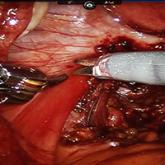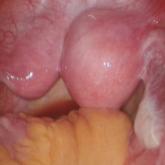Video

Robot-assisted laparoscopic excision of a rectovaginal endometriotic nodule
- Author:
- Obianuju Sandra Madueke-Laveaux, MD, MPH
- Khara M. Simpson, MD
- Arnold P. Advincula, MD
Video

Robot-assisted laparoscopic resection of a noncommunicating cavitary rudimentary horn
- Author:
- Obianuju Sandra Madueke-Laveaux, MD, MPH
- Beth W. Rackow, MD
- Arnold P. Advincula, MD
In this video the surgical patient is a 15-year-old adolescent with a 1-year history of progressive dysmenorrhea. Imaging studies revealed a...
